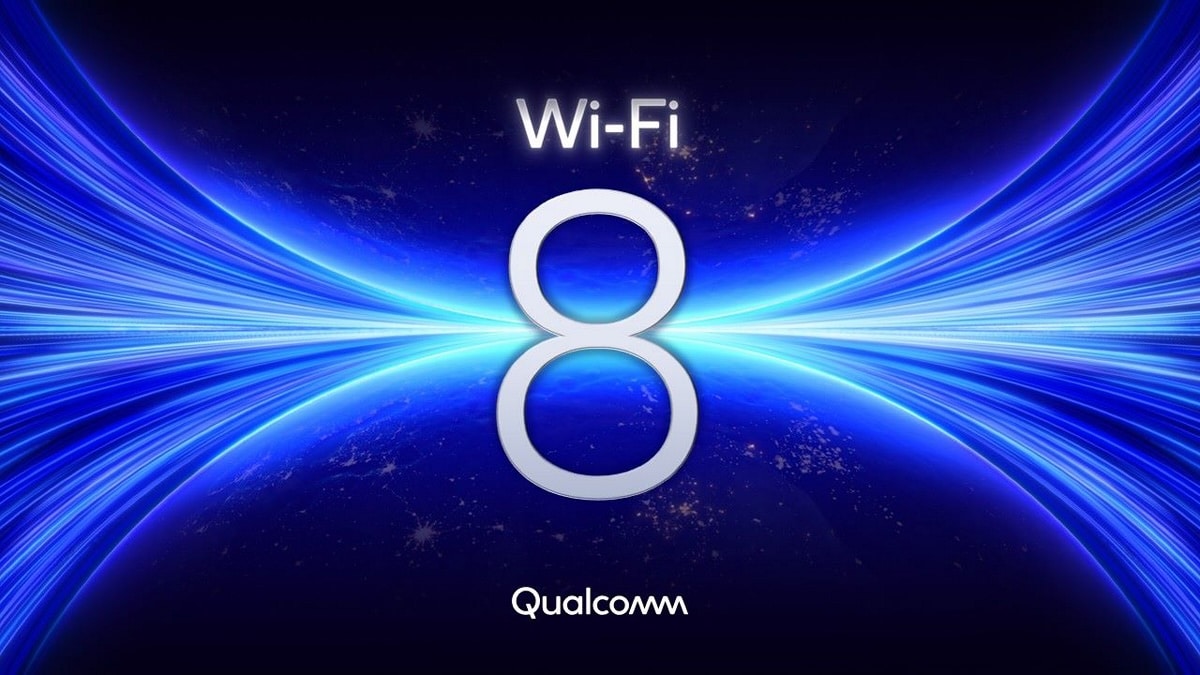Wireless connectivity is about to make a leap forward with the arrival of Wi-Fi 8, the commercial name for the upcoming IEEE 802.11bn standard, which is expected to be ratified by 2028. Although still in development, its promises position it as the technological backbone for enterprise, home, and public networks in the next decade. Instead of focusing on increasing speed like its predecessors, Wi-Fi 8 prioritizes what’s most in demand in real-world environments: extreme reliability, low latency, and seamless mobility.
For years, Wi-Fi generations have aimed for higher transfer rates. Wi-Fi 6 (802.11ax) introduced efficiency in congested networks. Wi-Fi 7 (802.11be) boosted performance with wider channels and 4096-QAM modulation. But Wi-Fi 8 takes a radical turn: it emphasizes resilience, even under adverse conditions, with smooth roaming, fewer packet losses, and predictable latency.
According to IEEE 802.11bn, Wi-Fi 8 aims to deliver:
- Over 25% increased performance in degraded signal conditions
- 25% lower latency at the 95th percentile
- 25% reduction in packet loss during access point handoffs
These improvements translate into stable, reliable connections in hospitals, factories, smart homes, autonomous vehicles, and stadiums—areas where Wi-Fi has previously struggled to ensure continuity.
Technical comparison: Wi-Fi 6 vs Wi-Fi 7 vs Wi-Fi 8
| Feature | Wi-Fi 6 (802.11ax) | Wi-Fi 7 (802.11be) | Wi-Fi 8 (802.11bn – planned) |
|---|---|---|---|
| Standardization year | 2019 | 2024 | 2028 (estimated) |
| Max theoretical speed | 9.6 Gbps | 46 Gbps | Similar or slightly higher |
| Channel bandwidth | Up to 160 MHz | Up to 320 MHz | Same, with optimizations for weak coverage |
| Max modulation | 1024-QAM | 4096-QAM | Optimized for extreme conditions |
| Expected latency | < 20 ms | ~5-10 ms | < 5 ms sustained in real-world environments |
| Roaming between APs | Conventional | Improved with MLO | Seamless: imperceptible cuts |
| Multi-AP coordination | No | Limited (MLO) | Full coordination between APs |
| Energy efficiency | Better than Wi-Fi 5 | Better, but demanding in 6 GHz | Optimized for device and router power management |
| Key use cases | Homes and offices | VR/AR, 8K streaming, gaming | Industrial automation, AI, critical connectivity |
Key innovations of Wi-Fi 8
- Continuous roaming (“Single Mobility Domains”): Devices move between access points without micro-cuts or renegotiation—crucial for mobile and mission-critical environments.
- Edge performance optimization: Physical enhancements to maintain quality even in weak signal zones.
- Multi-AP coordination: Routers work together to minimize interference and better allocate resources.
- Improved coexistence of internal radios: Ideal for devices using Wi-Fi, Bluetooth, or UWB simultaneously, like smart headphones or AR glasses.
- Smart energy saving: Features that reduce power consumption of clients and gateways without sacrificing performance.
Why does Wi-Fi 8 matter?
The straightforward answer is that connected mobility is growing exponentially. From autonomous vehicles and logistics drones to portable medical devices and embedded AI systems, all depend on robust, secure, and low-latency wireless connectivity.
Furthermore, Wi-Fi 8 is shaping up as the solution to the limitations of physical cabling, offering a level of reliability comparable to wired connections but with the flexibility only wireless can provide.
Priority applications for Wi-Fi 8
- Enterprises: Collaborative robots, AGVs, industrial sensors, digital hospitals.
- Homes: 16K streaming, health monitoring, predictive home automation, multi-user AR/VR.
- Public spaces: Stations, airports, stadiums, connected university campuses.
Qualcomm’s role in standardization
Qualcomm Technologies is playing a key role in developing IEEE 802.11bn, leading technical initiatives and collaborating on “Ultra High Reliability” (UHR) proposals. The company sees Wi-Fi 8 as a foundational platform advancing distributed AI, edge computing, and hyperconnectivity.
Conclusion: Wi-Fi becomes more professional
Wi-Fi 8 is not just an evolution; it’s a redesign focused on delivering professional-grade wireless connectivity. The era of Wi-Fi as a household convenience is over—now it will be the critical connection fabric for systems where failure is not an option.
Although full standardization is expected by 2028, the industry is already preparing for its widespread deployment. Because when mobility, AI, and automation demand more than just speed, reliability changes everything.
Source: Internet útil

